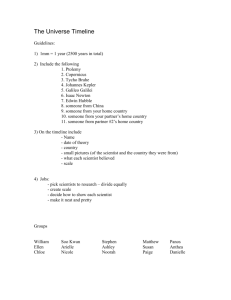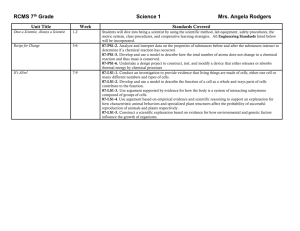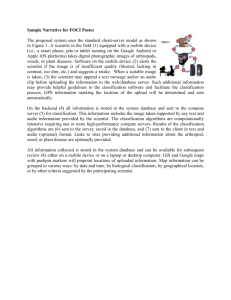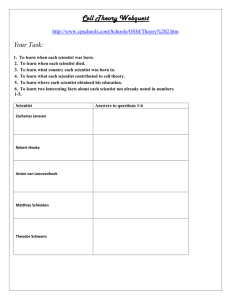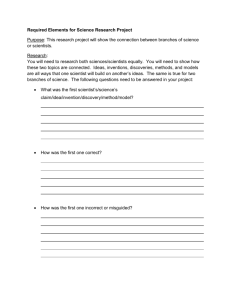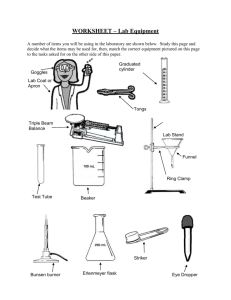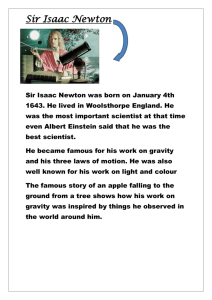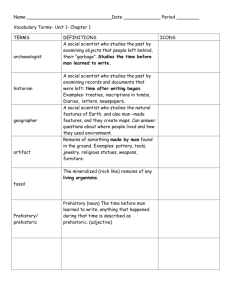Measurement Notes
advertisement
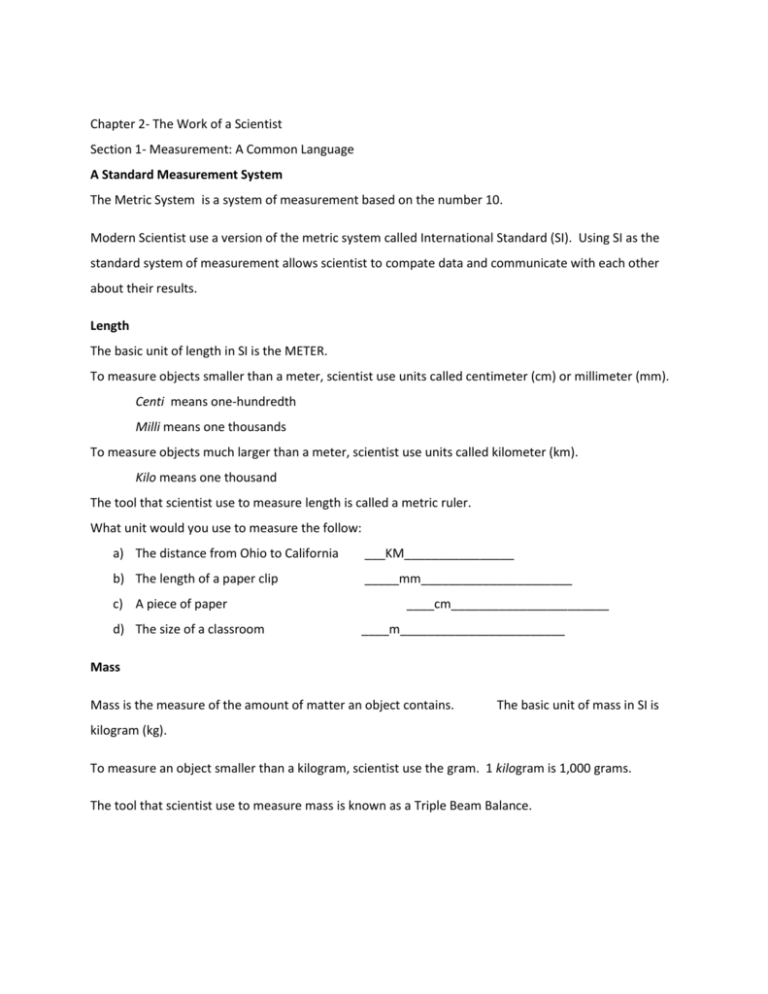
Chapter 2- The Work of a Scientist Section 1- Measurement: A Common Language A Standard Measurement System The Metric System is a system of measurement based on the number 10. Modern Scientist use a version of the metric system called International Standard (SI). Using SI as the standard system of measurement allows scientist to compate data and communicate with each other about their results. Length The basic unit of length in SI is the METER. To measure objects smaller than a meter, scientist use units called centimeter (cm) or millimeter (mm). Centi means one-hundredth Milli means one thousands To measure objects much larger than a meter, scientist use units called kilometer (km). Kilo means one thousand The tool that scientist use to measure length is called a metric ruler. What unit would you use to measure the follow: a) The distance from Ohio to California ___KM________________ b) The length of a paper clip _____mm______________________ c) A piece of paper d) The size of a classroom ____cm_______________________ ____m________________________ Mass Mass is the measure of the amount of matter an object contains. The basic unit of mass in SI is kilogram (kg). To measure an object smaller than a kilogram, scientist use the gram. 1 kilogram is 1,000 grams. The tool that scientist use to measure mass is known as a Triple Beam Balance. This is a triple beam balance. It has 3 beams that measure milligrams, grams and kilograms. Mass often confused with _weight________. They are NOT the same! Weight depends on ___gravity________. The weight of an object can change depending on the force of gravity. ___Mass_ does not change due to gravity, therefore, mass is always the same. Volume Volume is the amount of _space____ an object is taking up.To measure the volume of liquids, scientists use a unit known as a __liter_________. How many milliliters would there be in 1 liter? ___1,000_____. To measure liquids, you use a __graduated_____ cylinder. To measure the volume of a solid, you would use a _ruler____. The unit will be a ___cubic_____centimeter. To figure out the volume you need to measure an objects length, width and height. Once you know the length (L), width (W), and the height (H) you can solve using a calculator. Use this formula: LxWxH=V V stands for volume. To find the volume of an irregular solid (a solid without sides), you can put the object into __water__. Start with a graduated cylinder of water. Write down how much water is in it. Then put the object in. Write down the new amount. Then ___subtract_____! The difference is the mass of the object.

